Name of the environmental zone: Environmental Zone Düsseldorf – Germany
Date of entry into effect of the zone: 15-02-2009
Type of environmental zone: Permanent
Not allowed to drive (temporarily): Information currently unavailable
Not allowed to drive (permanently): Vehicle class: car, motorhome (M1), bus (M2, M3), van (N1), truck (N2, N3)
Fuel type: all
Euronorm: 0-3 (diesel), 0 (petrol, LPG)
Sticker/registration/application: Entry only with sticker (green)
Fines: 100 €
Area/extension of the environmental zone: The environmental zone is delimited by following streets: Rheinkniebrücke, Rheinalleetunnel, Rheinallee, Werftstraße, Wiesenstraße*, Bahnlinie behind Wiesen- und Kopperstraße, city boundary until A 52 junction Büderich, A 52 AS Büderich*, To the north following the city boundary, Böhlerstraße*, Büdericher Straße, along the meadows of the river Rhine until B 7, Theodor-Heuss-Brücke, Rotterdamer Straße, Stockumer Kirchstraße, Weißdornstraße, Beckbuschstraße, Heymstraße, along the bath of Rhine, Stockumer Höfe until A 44*, A 44 ? A 52 until Theodorstraße/ junction Rath*, Theodorstraße including bordering access roads (e.g. ISS-Dome)*, Liliencronstraße until S-Bahn-Line*, S-Bahnline unitl city boundaryt to the north*, city boundary until Reichswaldallee, Reichswaldallee, along Aaper Wald Waldstraße until Fahneburgstraße, Ernst-Poensgen-Allee, Ludenberger Straße, Benderstraße*, Gerricusplatz*, Steinweg, Quadenhofstraße, Hagener Straße until S-Bahn line, along city boundary, then west to Rothenbergstraße zu (including Gödinghover Weg), along Stadtwald before Bezirkssportanlage to Vennhauser Allee, Vennhauser Allee, Am Kleinforst until A 46, A 46 until junction Holthausen*, Oerschbachstraße*, Halbuschstraße (access Henkel free, Werstener Friedhofstraße, Quadestraße until Ritastraße, along Henkel area to Bonner Straße, Bonner Straße, Münchener Straße*, junction Bilk*, Fleher Brücke until Fleher Deich*, Volmerswerther Deich, Volmerswerther Str. incluing bordering residential roads (e.g. Hellriegelstraße), east along South Cemetery, Räuscherweg, Völklinger Straße*, along S-Bahn line and Holzstraße*, Speditionsstraße, Parlamentsufer until Rheinkniebrücke.
The aforementioned streets form the outside limit of the environmental zone and they are – except the streets marked with a star ( * ) – part of the environmental zone. Access to the parking and logistic areas of Düsseldorf Messe and the parking and logistic areas of Düsseldorf airport remain through the streets that are not part of the environmental zone: A 44 / Am Staad/ Rotterdamer Str. until Messetor 1 ( Neue Messestraße ) and Stockumer Höfe until A 44 AS Stockum.
Special features: Retrofitting allowed: yes (PM)
Contact of the environmental zone and exceptions: Road and Traffic Authority: Phone: (+49) 211/89-91.
Exemptions: Doctor, Disabled vehicle, Fire brigade, Military, Mobile cranes, Vintage car older than 30 years, Police car and Ambulance
Name of the environmental zone: Eco Lanes Düsseldorf (NOx) - Germany
Date of entry into effect of the zone: 15-04-2019
Type of environmental zone: Permanent
Not allowed to drive (temporarily): Information currently unavailable
Not allowed to drive (permanently): The low emission zone has no longer been active since 01.03.2021. Currently, everyone is allowed to drive in again.
Fines: 15 €
Area/extension of the environmental zone: Merowingerstraße towards the city centre between Kopernikusstraße and Ludwig-Hammers-Platz. As well as Prinz-Georg-Straße between Moltkestraße and Bagelstraße in both directions.
On 14.10.2019 another environmental lane was established in Düsseldorf. This environmental lane has several sections, which will come into force over the course of the year.
The 1st section runs along Kaiserstraße and Fischerstraße between Sternstraße and Homberger Straße.
The 2nd section begins at the level of Südpark behind the exit of the A46 Düsseldorf-Centre highway and leads via Werstener Straße, Witzelstraße, Mecumstraße and Erasmusstraße to Corneliusstraße.
Contact of the environmental zone and exceptions: E-Mail: genehmigungen.verkehr@duesseldorf.de
Exemptions: Public bus, Taxi and Motorcycles (registration/application necessary)
Environmental zone (green)
Do I need stickers or registrations?
To enter an environmental zone, each vehicle concerned requires a valid green environmental sticker. Otherwise, a fine of 80 euros plus 25 euros processing fee is to be expected.
How do I recognize the low emission zone?
The green environmental zone can be recognized by the traffic signs 270.1 and 270.2.
In front of each zone there is the sign 270.1 with an additional sign for the permitted sticker.
The end of the low emission zone is shown by the sign 270.2.
In our Green Zones App we have a detailed map of each low emission zone. So you can easily see the boundaries and avoid penalties.
Are there other low emission zones in Germany?
Yes, a lot of them. With over 80 different environmental zones, Germany has one of the most in Europe.
In our Green Zones App we have gathered together all the low emission zones in Europe and presented them clearly.
Diesel driving bans (NOx)
Do I need stickers or registrations?
Currently, no sticker or registration is required for the diesel driving bans. However, there are considerations and plans to introduce a blue sticker. Even without a sticker, it is essential that the European standards and rules are observed in order to avoid penalties. Otherwise a fine of 25 -75 Euro plus handling fee is to be expected.
How do I recognize the low emission zone?
For the diesel driving ban zones, traffic signs No. 251 "Ban on motor vehicles" and/or No. 253 "Ban on motor vehicles over 3.5 t" with an addition for diesel vehicles "Diesel up to Euro 5/V" will be used. Petrol vehicles may also be affected. This is indicated by the additional sign "Petrol up to Euro 2/II".
In our Green Zones app we have a detailed map of each low emission zone. So you can easily see the boundaries and avoid penalties.
Are there other NOx zones in Germany?
Yes, a lot of them. With over 80 different environmental zones, Germany has one of the most in Europe.
In our Green Zones App we have gathered together all the low emission zones in Europe and presented them clearly.
Electric cars
Is there a sticker for electric cars?
Yes! However, the sticker for electric vehicles is not intended for everyone. If the vehicle is registered in Germany, the last character on the license plate can be an "E". However, if the vehicle is registered abroad, an electric sticker (E-sticker) is required.
What advantages do I have with an E-sticker?
The E-sticker gives you various advantages. Depending on the municipality, there are various advantages, such as the use of bus lanes, free parking on the road and at electricity charging points, as well as the possible use of otherwise closed roads.
Do I need a green environmental sticker despite the E-sticker?
Yes, every car, no matter whether it is being driven on with petrol, diesel or electricity, requires a green environmental sticker according to the law. The E-sticker also entitles you to additional advantages over non-electric vehicles. The 35th BImSchV does not provide a separate paragraph for electric vehicles, which regulates them as an exception. Therefore: If an electric vehicle drives into a green environmental zone without a green sticker, a fine of 80 € + approx. 25 € handling fee must be expected.
Good to know...
All current driving bans and further information are available in our Green-Zones App.
Are night-time environmental zones coming?
The Berlin Green Party recently presented a proposal to equalise the traffic congestion in the capital. The idea is to shift delivery and commercial traffic to the night-time hours. According to Antje Kapek, transport spokesperson for the Greens, this proposal should help to ensure that delivery vehicles, refuse collection, care services and doctors get stuck less in congested and parked-up streets during the day. Low-noise and low-emission lorries could increasingly drive into cities at night and on special routes.
Bicycle instead of car - Paris in transition
A study by a public foundation has shown that more than one in ten journeys in Paris and the surrounding area are made by bicycle. This is a remarkable increase compared to 14 years ago, when less than one in thirty journeys were made by bike. Paris seems to have been endeavouring to change its transport policy for years. With more cycle paths and cycle lanes, fewer car parks and higher parking charges, the city is trying to promote cycling and reduce car traffic. But what does this mean for the existing low emission zone?

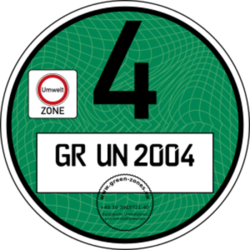
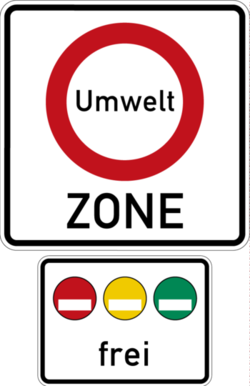
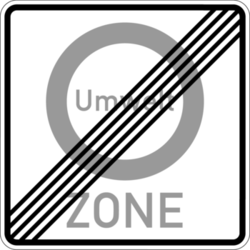
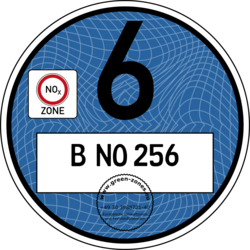
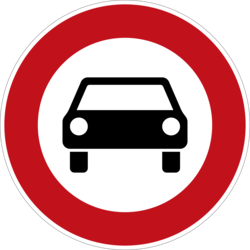
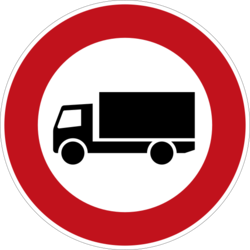
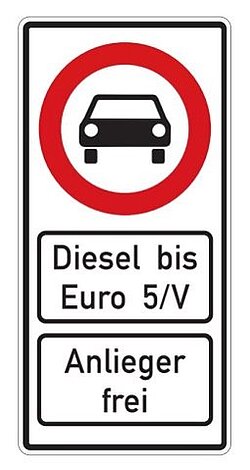
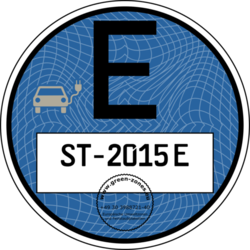
![[Translate to Englisch:]](https://www.green-zones.eu/fileadmin/_processed_/8/3/csm_screenshot_2024-04-18_125614_c7d9eca4a5.png)
![[Translate to Englisch:]](https://www.green-zones.eu/fileadmin/_processed_/2/0/csm_screenshot_2024-04-18_121908_5e1053efaf.png)